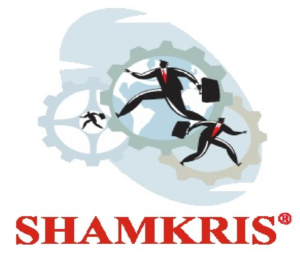Trademark Registration
What is a Trademark Registration?
A trademark (also written trade mark or trade-mark) is a type of intellectual property consisting of a recognizable sign, design, or expression which identifies products or services of a particular source from those of others, although trademarks used to identify services are usually called service marks. The trademark owner can be an individual, business organization, or any legal entity.
A trademark may be located on a package, a label, a voucher, or on the product itself. For the sake of corporate identity, trademarks are often displayed on company buildings. It is legally recognized as a type of intellectual property.
The first legislative act concerning trademarks was passed in 1266 under the reign of Henry III, requiring all bakers to use a distinctive mark for the bread they sold. The first modern trademark laws emerged in the late 19th century. In France, the first comprehensive trademark system in the world was passed into law in 1857.
The Trade Marks Act 1938 of the United Kingdom changed the system, permitting registration based on “intent-to-use”, creating an examination-based process, and creating an application publication system. The 1938 Act, which served as a model for similar legislation elsewhere, contained other novel concepts such as “associated trademarks”, a consent to use the system, a defensive mark system, and a non claiming right system.
The symbols ™ (the trademark symbol) and ® (the registered trademark symbol) can be used to indicate trademarks; the latter is only for use by the owner of a trademark that has been registered.
Contact Us
What are the Benefits of a Trademark Registration?
Brand Expansion
A trademark license provides an opportunity to expand the reach and presence of their brand. By granting licenses to third parties, the licensor can leverage the licensee's resources, expertise, and distribution channels to introduce their trademarked goods or services into new markets or territories.
Revenue Generation
A trademark license allows the licensor to generate additional revenue streams. The licensee typically pays royalties or fees to the licensor for the right to use the trademark. This can be a significant source of income for the trademark owner, especially if multiple licenses are granted to different licensees.
Market Penetration
A trademark license provides a valuable tool for market entry. By using an established and recognized trademark, the licensee can benefit from the reputation, consumer trust, and brand recognition associated with the trademark. This can help the licensee gain a competitive edge, attract customers, and establish their presence in the market more easily.
Goodwill and Reputation
A trademark license allows the licensee to associate their products or services with a well-known and trusted brand. This association can enhance the perceived value, quality, and credibility of the licensee's offerings, thereby increasing consumer confidence and facilitating business growth.
Collaboration and Partnerships
A trademark license can enable collaborations and partnerships between the licensor and licensee. This can lead to joint marketing initiatives, co-branding opportunities, and shared resources, which can benefit both parties by leveraging their respective strengths and expanding their market reach.
Cost Sharing and Risk Mitigation
Trademark license can provide cost savings and risk mitigation. Instead of developing and building their own brand from scratch, the licensee can leverage an established trademark, which reduces the time, effort, and resources required to create brand recognition and awareness.
Why Trademark Registration is Required?
A trademark license is required for several reasons. Firstly, it ensures legal compliance by granting permission to use the trademark, reducing the risk of infringement. Secondly, it allows the trademark owner to retain ownership and control over their brand. Thirdly, a license enables the owner to protect the brand’s integrity and reputation by setting quality standards for its use.
Moreover, it provides an avenue for market expansion and revenue generation through licensing to third parties. Additionally, a license mitigates risks for licensees by leveraging an established trademark, and it opens up collaboration opportunities between the licensor and licensee. Overall, a trademark license is crucial for legal compliance, brand protection, market expansion, revenue generation, risk mitigation, and collaboration.
What you can apply for Trademark Registration?
Company Logo
If your company has a distinctive logo that you use to identify your products or services, you can apply to register it as a trademark. This protects the visual representation of your brand and prevents others from using a similar logo that could confuse consumers.
Company Name
Your company name is a crucial identifier for your business, and registering it as a trademark can provide legal protection against others using the same or similar name in connection with similar goods or services. This helps establish your exclusive rights to use the name in commerce.
Brand Name
Similarly, if you have a brand name under which you market your products or services, you can apply to register it as a trademark. This ensures that competitors cannot use the same or similar brand name to market their offerings, protecting the integrity and reputation of your brand.
Slogans or Taglines
Short phrases or slogans used to identify or promote goods or services can also be registered as trademarks. For example, Nike's "Just Do It" or McDonald's "I'm Lovin' It."
Document Required for Trademark Registration
Role of Shamkris and Process of Trademark Registration
Shamkris adopts a results-oriented approach to compliance with mandatory licence requirements in the organization. A simple and guidance methodology help organisation to achieve licence in a timely manner and cost-effective. Shamkris support 100% in advisory, Guidance, Compliance with respect to license requirements to obtain approval.
The License process described below:
Advisory for the document required
Preparation of documents as per application & list of documents.
Application File
Inspection by the department if required
Liason department
License issued for 10 years
Renewal when due
Who can issue the Trademark Registration?
FAQ
A trademark is a distinctive sign, symbol, word, phrase, logo, or combination thereof used to identify and distinguish the goods or services of one seller or provider from those of others.
Registering your trademark provides legal protection and exclusive rights to use the mark in connection with your goods or services. It helps prevent others from using similar marks that could confuse consumers and protects the reputation and integrity of your brand.
Any individual, business, partnership, or legal entity that uses or intends to use a mark in commerce can apply for trademark registration. This includes individuals, companies, NGOs, and government entities.
Various elements can be registered as trademarks, including company logos, names, brand names, slogans, sounds, colors, and shapes, as long as they fulfill the requirements for registrability and distinguish the goods or services from others in the marketplace.
The application process typically involves filing an application with the relevant trademark office, providing details about the mark and its intended use, and paying the required fees. The application may undergo examination and publication before registration is granted.
Trademark registration is initially valid for a period of 10 years in many jurisdictions, with the option to renew the registration indefinitely as long as the mark continues to be used in commerce and renewal fees are paid.

